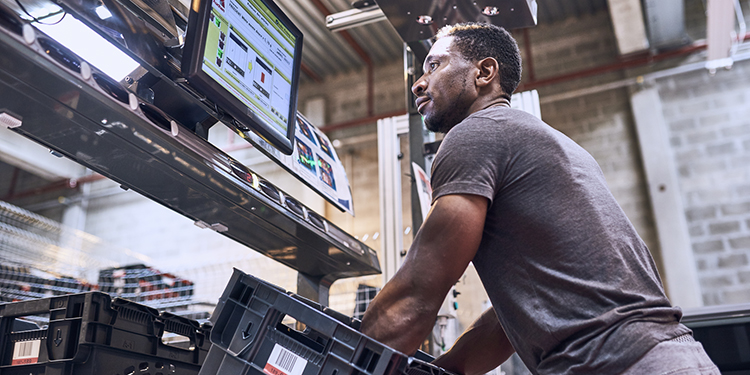6 Ways To Build A More Resilient Supply Chain

As it turns out, supply chain disruptions may be the biggest global shift in the post-COVID-19 “new normal.” After all, what business or consumer hasn’t been affected in some way by retail stockouts of essential items, the national labor shortage, backed up cargo ships waiting to unload at ports around the world, ransomware attacks, hurricanes, wildfires, power grid failures, floods, and more in the past 18 months? Whereas manufacturers, distributors, and retailers historically focused their corrective supply chain actions on process improvements, today they must focus instead of building resiliency in order to withstand all the turbulence.
To help supply chain managers increase their operations’ agility and flexibility in the face of the unexpected, the members of MHI’s Solutions Community has developed a list of six strategies. Published in MHI Solutions magazine, the article—“Building Resilient Supply Chains in the Face of Costly Disruptions”—explores several measures that organizations can take to bolster their resilience. They include:
- Diversify the Supplier Base. Far too many companies rely exclusively on a single supplier, or suppliers from a single region, for a critical component, product, or ingredient. Yet, when a disruption occurs that impacts that supplier or region, the source can quickly disappear. A better strategy is to establish multiple suppliers across different countries of origin to ensure continuous, flexible sourcing should a production or delivery issue occur.
- Stockpile the Essentials. Traditionally, in an effort to be Lean and reduce carrying costs, companies avoided storing large amounts of inventory—whether that was products or components. While the just-in-time approach offers efficiency and cost-reduction advantages, it can be catastrophic when a disruption to delivery occurs. For better resiliency, stockpiling the most vital components and products will minimize the impact of an unexpected shortfall.
- Consider “Near-Shoring.” While establishing domestic suppliers may initially be more expensive than those located overseas—and with cheaper labor—having an in-country source mitigates the impact of an international supply disruption.
- Incentivize Customer Patience. Offering customers coupons, discounts, or other incentives may prompt them to agree to a longer timeframe for delivery (as opposed to same-day, next-day, or two-day shipping). That can build an additional time buffer that allows a company greater flexibility in how, and when, it fulfills orders.
- Establish Smaller, Local Hubs. Switching from a network of a few large, regional distribution centers (DCs) to a more expansive, regional footprint of multiple, smaller facilities can reduce long-term costs by putting products closer to customers. This reduces the risks associated with transportation problems.
- Adopt Automation. Staffing challenges, as well as the chance of viral outbreaks, are reduced with the implementation of autonomous mobile robots (AMRs), goods-to-person picking systems, automatic guided vehicles (AGVs), and other automated technologies. The machines handle the routine tasks, leaving valuable labor resources available to manage exceptions. Additionally, these technologies are inherently flexible and agile, allowing an operation to test solutions incrementally and build upon the ones proven to work best in a much shorter timeframe and lower total investment than conventional automated systems.
For more details about how to mitigate the impact of the unexpected on supply chains, the full article can be found here.
Solutions Community members are the industry’s thought leaders on automation, software, hardware, equipment and services that support a fully integrated supply chain. This includes suppliers, integrators, consultants, media, academia and users. They collaborate on solutions worldwide and in virtually every major manufacturing and distribution sector.



